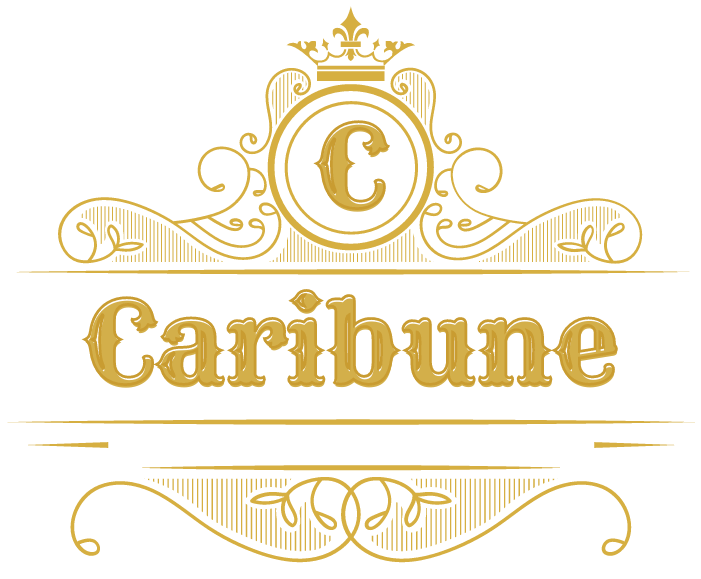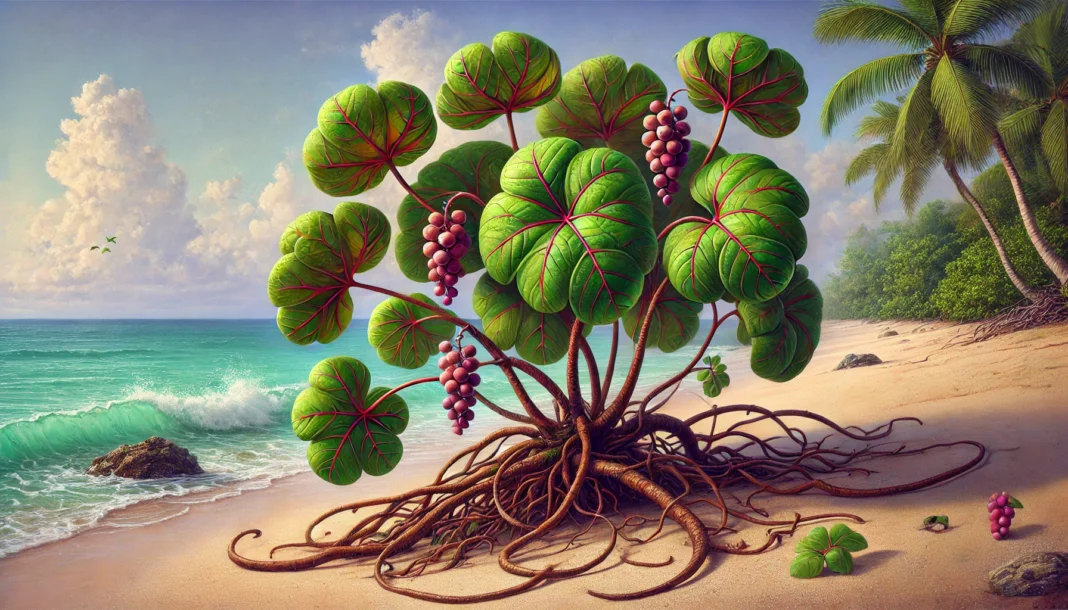The Sea Grape (Coccoloba uvifera) is a hardy and distinctive plant commonly found along the sandy shores of the Caribbean and other tropical coastal regions. Its unique features and adaptability make it an integral part of the coastal ecosystem, providing food, shade, and protection to various species, as well as serving as a natural barrier against coastal erosion.
Growing near the ocean, the Sea Grape thrives in the salty, sandy soils where other plants might struggle. Its large, rounded leaves, reddish veins, and clusters of grape-like fruits are not only iconic but also serve important ecological functions.
Key Features of the Sea Grape Plant
Distinctive Leaves and Structure
The most noticeable feature of the Sea Grape plant is its large, leathery leaves, which are round or oval in shape and can grow up to 25 cm in diameter. These leaves are a deep green, with prominent reddish or purple veins running through them, giving the plant a unique and attractive appearance. The leaves are thick and waxy, helping the plant retain moisture in the salty and often dry conditions of the beach environment.
The Sea Grape plant typically grows as a large shrub or small tree, reaching heights of up to 10 meters. It often forms dense thickets that provide shade and habitat for coastal wildlife. Its sprawling branches and strong root systems help stabilize sandy soils, making it an important species for protecting shorelines from erosion.
Grape-Like Fruits
The fruit of the Sea Grape is another distinctive feature. It grows in clusters that resemble grapes, with individual fruits about 2 cm in diameter. The fruits start off green and gradually turn purple as they ripen. While they look similar to grapes, Sea Grape fruits are slightly more tart and are often eaten fresh or used to make jellies, jams, and even wine in some Caribbean cultures.
The fruit is also an important food source for local wildlife, including birds, crabs, and small mammals. Its presence helps sustain ecosystems along the coast.
Salt and Drought Tolerance
The Sea Grape is highly adapted to its harsh coastal environment. It can tolerate high levels of salinity in the soil, allowing it to thrive where freshwater species would perish. Additionally, its deep roots help it access water from below the surface, enabling the plant to survive long periods of drought.
The Sea Grape’s thick leaves also reduce water loss through evaporation, making it well-suited for the sunny, windy conditions of tropical beaches.
Ecological Importance
The Sea Grape plays a vital role in protecting coastal environments. Its root system helps bind loose sand, reducing erosion caused by wind and waves. This not only preserves beaches but also helps maintain the stability of dunes and other coastal landforms.
In addition to its role in preventing erosion, the Sea Grape provides shelter and food for a variety of animals. Birds like doves, pigeons, and seagulls feed on the fruits, while its thick branches offer protection for nesting and roosting. Its dense foliage also offers shade and cooling to the ground below, creating a microhabitat for smaller plants and animals.
Cultural and Practical Uses
Beyond its ecological functions, the Sea Grape has long been valued for its practical uses by coastal communities. The fruits are commonly harvested to make jams, jellies, and even alcoholic beverages. In some regions, the wood of the plant has been used in construction, though its protection as an important coastal species has limited widespread harvesting.
The Sea Grape’s broad leaves have historically been used as makeshift plates or coverings, and its bark has medicinal uses in traditional remedies for sore throats and other ailments.
Conclusion
The Sea Grape is much more than just a beautiful plant along the shoreline; it is a crucial part of the coastal ecosystem. Its distinctive features—large, rounded leaves, grape-like fruit clusters, and hardy salt-tolerant nature—make it well-suited for life along the beaches of the Caribbean. As a protector against erosion, a provider of food and shelter for wildlife, and a resource for humans, the Sea Grape is a vital species that helps maintain the health and stability of tropical coastal environments.
FAQ
What are the main features of the Sea Grape plant?
The Sea Grape plant has large, round, leathery leaves with reddish veins, grape-like fruit clusters that ripen from green to purple, and a sprawling structure that can grow as a shrub or small tree up to 10 meters tall. It thrives in coastal environments due to its salt and drought tolerance.
Can you eat Sea Grape fruits?
Yes, Sea Grape fruits are edible. They have a slightly tart taste and are commonly used to make jams, jellies, and wine in some Caribbean cultures.
What role does the Sea Grape play in coastal ecosystems?
The Sea Grape helps prevent coastal erosion by stabilizing sandy soils with its strong root system. It also provides food and shelter for wildlife, including birds and small animals, and helps create a microhabitat by offering shade and cooling the ground beneath it.
Why is the Sea Grape plant important for beach environments?
Sea Grapes are important for beach environments because they protect shorelines from erosion, serve as a natural windbreak, and support biodiversity by providing food and habitat for coastal species.
How does the Sea Grape adapt to salty and dry conditions?
The Sea Grape plant has a salt-tolerant root system and thick, waxy leaves that help retain moisture. Its deep roots access water in sandy soils, enabling it to survive in the dry and salty conditions typical of beach environments.
Are there any cultural or practical uses for the Sea Grape?
Yes, the Sea Grape has several cultural and practical uses. Its fruit is used in cooking, its wood has been used for construction, and its bark is used in traditional medicine. Historically, its large leaves have also been used as plates or coverings.

